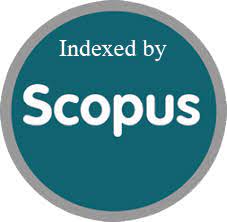Comparative Title Knowledge, Attitude, And Perception About Respiratory Diseases Associated With Biomass Smoke Exposure Among Rural Women In West Bengal
DOI:
https://doi.org/10.52783/jns.v14.3853Keywords:
Biomass smoke, respiratory diseases, rural women, West Bengal, indoor air pollution, knowledge-attitude-perception (KAP)Abstract
Background: Biomass smoke is a primary source of indoor air pollution in many rural settings, contributing to an increased burden of respiratory symptoms and diseases. In West Bengal, India, women face disproportionate exposure due to traditional cooking practices using biomass fuels like wood, crop residue, and dung. Understanding their knowledge, attitude, and perception (KAP) of these health risks is crucial for designing targeted interventions.
Methods: This cross-sectional study was conducted among 400 rural women in a single selected district of West Bengal from April to October 2023. A multistage cluster sampling strategy was used to ensure representation of various administrative blocks and villages within the district. Structured interviews assessed socio-demographics, fuel use, ventilation, and KAP regarding respiratory diseases. Knowledge scores were derived from participants’ understanding of common respiratory conditions (e.g., chronic cough, breathlessness). Descriptive statistics, chi-square tests, and logistic regression were performed using SPSS version 25.
Results: Approximately 38% of respondents showed adequate knowledge of the respiratory risks linked to biomass smoke, with 32% recognizing persistent cough and difficulty in breathing as common health effects. Although 55% believed that improved cookstoves or cleaner fuels could prevent respiratory problems, only 28% consistently used cleaner alternatives. The main barriers were financial limitations, inconsistent fuel supply, and low awareness. Secondary or higher education and exposure to health awareness programs were significantly associated with better KAP (p < 0.05).
Conclusion: This study highlights suboptimal KAP concerning biomass smoke–related respiratory diseases among rural women in a selected district of West Bengal. Enhancing educational outreach, improving cookstove availability, and ensuring affordable, cleaner fuels are recommended to reduce the respiratory health burden. A multifaceted intervention addressing socio-economic and cultural determinants is crucial for effective policy implementation.
Downloads
Metrics
References
World Health Organization. Household air pollution and health. WHO Factsheet, 2021.
Bonjour S, Adair-Rohani H, Wolf J, et al. Solid fuel use for household cooking: Country and regional estimates for 1980–2010. Environ Health Perspect. 2013;121(7):784–790.
International Energy Agency (IEA). Energy Access Outlook 2017. IEA; 2017.
Government of India. Census of India 2011: Primary Census Abstract. Registrar General & Census Commissioner, India.
Lim SS, Vos T, Flaxman AD, et al. A comparative risk assessment of burden of disease and injury attributable to 67 risk factors. Lancet. 2012;380(9859):2224–2260.
Dherani M, Pope D, Mascarenhas M, et al. Indoor air pollution from unprocessed solid fuel use and pneumonia risk in children under five: A systematic review and meta-analysis. Bull World Health Organ. 2008;86(5):390–398.
Smith KR, Bruce N, Balakrishnan K, et al. Millions Dead: How Do We Know and What Does It Mean? Methods Used in the Comparative Risk Assessment of Household Air Pollution. Annu Rev Public Health. 2014;35:185–206.
Ministry of Petroleum and Natural Gas (MoPNG). Pradhan Mantri Ujjwala Yojana. Government of India, 2020.
Alerton DG, Bruce N, Gordon SB. Indoor air pollution from biomass fuel smoke is a major health concern in the developing world. Trans R Soc Trop Med Hyg. 2008;102(9):843–851.
Balakrishnan K, Ghosh S, Thangavel G, et al. Exposures to fine particulate matter (PM2.5) and birthweight in a rural-urban, mother-child cohort in Tamil Nadu, India. Environ Res Lett. 2020;15(5):054002.
Press Information Bureau. Ministry of Petroleum & Natural Gas: PMUY Achievements. Government of India, 2021.
Pillarisetti A, Mehta S, Smith KR. HAPINing: clean cooking and the SDGs. Bull World Health Organ. 2017;95(7):486–486A.
Lewis JJ, Pattanayak SK. Who adopts improved fuels and cookstoves? A systematic review. Environ Health Perspect. 2012;120(5):637–645.
Siddiqui AR, Lee K, Bennett D, et al. Eye and respiratory symptoms among women exposed to wood smoke emitted from indoor cooking: A study from southern Pakistan. Energy Sustain Dev. 2009;13(2):71–76.
Rehfuess E, Puzzolo E, Stanistreet D, et al. Enablers and barriers to large-scale uptake of improved solid fuel stoves: a systematic review. Environ Health Perspect. 2014;122(2):120–130.
Hosgood HD, Wei H, Sapkota A, et al. Household coal use and lung cancer: systematic review and meta-analysis of case–control studies, with an emphasis on geographic variation. Int J Epidemiol. 2011;40(3):719–728.
Van Gemert F, Kirenga B, Chavannes N, et al. Impact of Chronic Respiratory Symptoms in a Rural African Setting: The Case of Masindi District, Uganda. Prim Care Respir J. 2012;21(2):214–219.
Downloads
Published
How to Cite
Issue
Section
License

This work is licensed under a Creative Commons Attribution 4.0 International License.
You are free to:
- Share — copy and redistribute the material in any medium or format
- Adapt — remix, transform, and build upon the material for any purpose, even commercially.
Terms:
- Attribution — You must give appropriate credit, provide a link to the license, and indicate if changes were made. You may do so in any reasonable manner, but not in any way that suggests the licensor endorses you or your use.
- No additional restrictions — You may not apply legal terms or technological measures that legally restrict others from doing anything the license permits.










